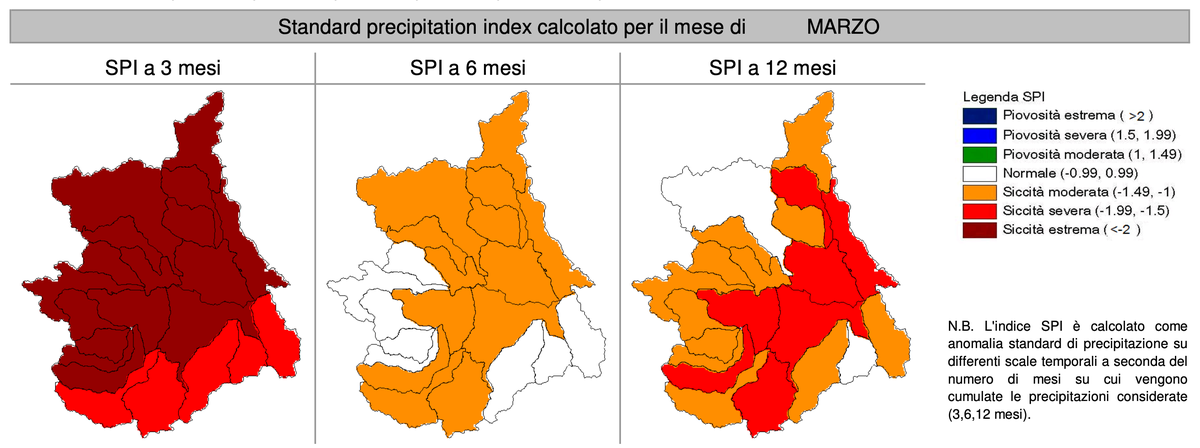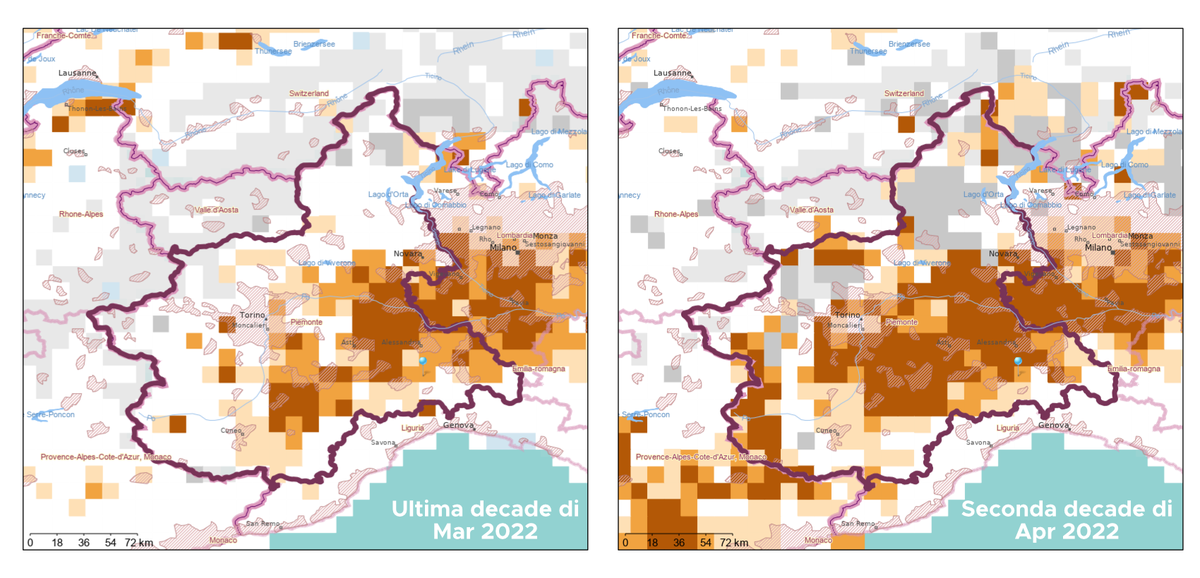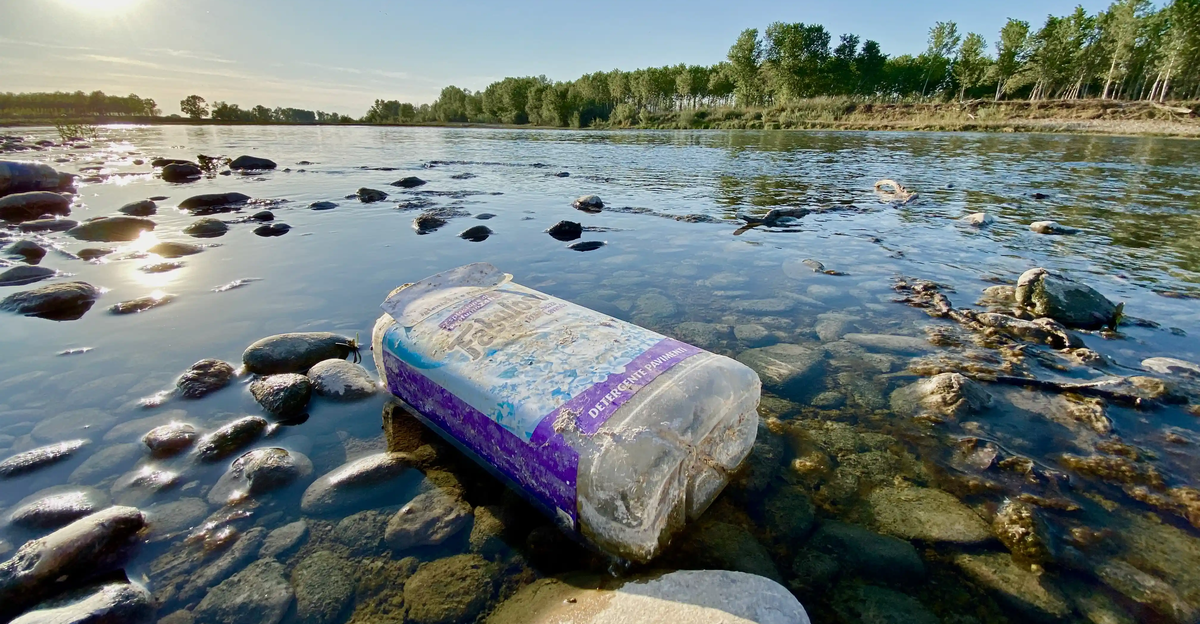A non-winter
Temperatures above average, dry rivers: this was the situation that occurred in 2022 on Piedmont.

© Samuele Giatti
A few drops of water arrived, but it was not enough to resolve the serious drought that hit Piedmont in 2022. The region’s rivers are at an all-time low, to the point that relics of a past that has remained hidden by water are emerging from their beds – which are increasingly dried up: from fragments of Roman bridges, increasingly visible (as in the case of the Sesia south of Vercelli) to even the remains of boats and tanks from the Second World War, such as those recovered along the course of the Po in Emilia-Romagna.
Beyond the spectacularity of finding finds of historical importance, the lack of water had exposed the economy of the primary sector of the Po Valley to an unprecedented crisis. This event has never been recorded, at least in the history of agricultural entrepreneurs of the territory and by those who manage the water as the East Sesia Irrigation Association, the consortium that manages the irrigation infrastructure on the territory of the three regions: Piedmont, Lombardy and Emilia-Romagna.
The continuous scarcity of water resources did not allow to plan, in the stort term, the start of irrigation activities in any area of the district. As a result, shift work measures were taken which made it possible to carry out emergency wetting for autumn-winter crops, which have rarely required irrigation at this time of year.

Standard Precipitation Index (SPI) calculated for March 2022 (Credits: Bollettino Idromensile ARPA Piemonte)
We examined the hydrological bulletin of the monthly March 2022, in which the phenomenon of drought was evident. From the data provided by Arpa Piemonte, we can see a deficit of more than 70%, with peaks of 91% in the Ticino basin and 84% in the Sesia basin.
According to the SPI indicator normally used to calculate the anomaly with respect to rainfall standards, this translates into a scenario of ‘extreme drought’ if only the last three months are considered, or ‘severe drought’ if the last year is considered.
This is also confirmed by the European Drought Observatory, which, using data collected from observation of our planet from space, provides a detailed picture of soil conditions. It is evident, in particular, that the soil moisture – and thus its water content – is strongly below average, confirming what happens after a long period without rain.

Soil Moisture Anomaly Index – February/March 2022 (Credits: Joint Research Centre, Global Drought Observatory)

Soil Moisture Anomaly Index – March/April 2022 (Credits: Joint Research Centre, Global Drought Observatory)
The dark brown squares indicate areas with severe drought and their extension increased from February to April 2022.
The problem is not limited to what we observe with our own eyes, but to suffer the effects of the absence of rain were above all the aquifers. Immense underground deposits that contain our natural “stocks” of water.
The groundwater level in the Novara sector of our district is about 20 cm below the level of 2021 and 40 cm lower than the average of the period 2009-2020. In Lomellina the aquifer in some areas records values up to 40 cm below the level of last year.
Associazione Irrigazione Est Sesia
To cope with the increasing shortage of water, farmers had started to use techniques of cultivation of rice “in dry”.

© Samuele Giatti
Together with the snows, glaciers and pre-alpine lakes, the water table – in these areas – is a global system of considerable size, with a huge accumulation capacity, a reservoir spread over about 500,000 hectares of agricultural land between the Dora Baltea and Adda rivers and recently estimated at between 750 million and one billion cubic metres of water. A precious store whose recharge is very slow (it takes 30-40 days with full irrigation), precisely because it relies on filtration phenomena through the soil, also favoured by the very cultivation of rice under water.
If we compare the situation 2022 with the one 2023, we can see a slight change.

© Joint Research Centre, Global Drought Observatory
Based on data from Arpa Piemonte, we can see that the drought index , of September 2023, is different than in 2022. In fact the rains were more concentrated in the II decade of the month, while in the I and III were completely dry. Unfortunately, no homogeneous precipitation is recorded, namely, there are a + 35% in the north and a -54% in the southern sectors.

Anomaly index of SPI rainfall at 1 month, 3, 6 and 12 months on Piedmont
This year the SPI and SPEI precipitation anomaly indices shows that in the 3 and 6 months it was characterized by moderate rainfall in Western Piedmont. Otherwise, in the long term, we can notice a drought situation, even extreme, in the territories of Alessandria territory and in the northern Alpine belt. Unfortunately, this change is not found in the southern basins, as water flow levels are below the historical average; therefore, there is talk of a moderate local drought.

